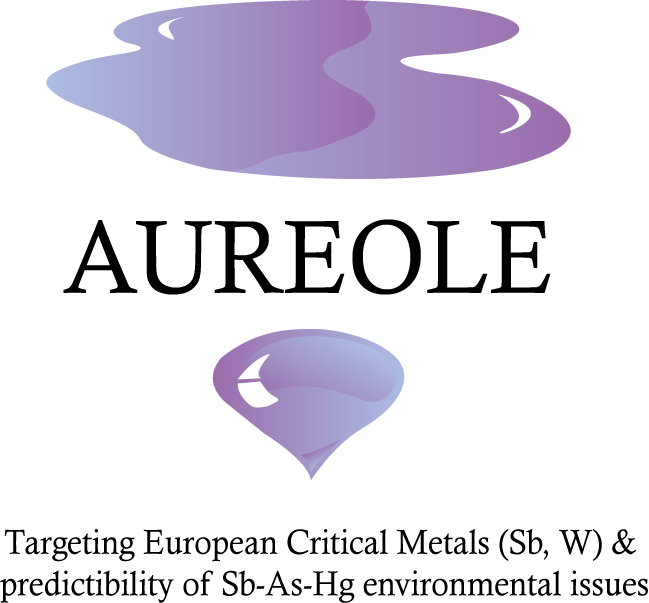
AUREOLE
Date de début : 01/10/2019
Date de fin : 31/03/2023
Numéro de contrat
ID:82
Durée de projet
3 ans
Financement
ERA MIN 2
Montant
454 k€
Coordinateur : Eric Gloaguen (BRGM-ISTO)
Partenaires : BRGM, ISTO, Université de Castilla-La Mancha, Université de Porto, Antea Group
Site web du projet : https://aureole.brgm.fr/
Antimony is a critical metal for Europe. Indeed, Antimony is widely used in a variety of industrial operations, especially in the European aircraft industry, such as production of flame retardants, plastics, paint pigments, glassware and ceramics, alloys in ammunition and battery manufacturing plants. Moreover, it’s most promising use may be for rechargeable lithium-ion and sodium-ion batteries since Antimonybased materials are promising ultra-fast high-capacity anodes. The overall approach of the AUREOLE project is based on disruptive concepts: i) development of a 3D large-scale metallogenic model integrating deep-seated processes to determine the spatial distribution of ore deposits; ii) the use of mineral prospectivity data weighted by surface data to determine the probability of environmental risk over large areas. Despite its strategic importance, the knowledge on Antimony and its ore deposits remains poorly constrained. Moreover, Europe remains under the threat of an essentially Chinese supply despite a proven potential for European deposits that contain also strategic and precious co-products (W, Au). In parallel, Antimony and associated metalloids (As, Hg, etc) are more and more recognised as a global threat for human health and it’s has been demonstrated that most of elevated concentrations of Antimony on earth surface originating from natural, geogenic sources. Then, a first large-scale identification of these areas where primaries resources occur and metalloids can contaminate humans should be a priority. To achieve its objectives, the AUREOLE project has been designed in three main inter-related work packages closely related to the work package 0 management work package led by the coordinator. The work package 1 is designed to produce the new 3D deep-seated metallogenic model for antimony mineralisations and contribute in 3D to the global understanding of the antimony mineralising processes. The work package 2 is designed to the understanding of processes – such as geomorphology, weathering, climate, land uses – that control the mobilisation and transport of metalloids at the earth surface. The work package 3 will use results from work packages 1 & 2 to produce large-scale mineral prospectivity and a large-scale environmental risk assessment by weighting mineral prospectivity with earth surface properties, such as DTM, rainfall, weathering cartographic maps, etc. The project will take place over 36 months with a logically offset start of the work package 3 using the results of other work packages. The consortium associates partners with complementary expertise, cultures and skills on common objectives. It is composed of 4 leading research entities in the field of ore deposits, ore genesis and environmental risk assessment completed by Antea Group, a major international engineering company, whose core business is the analysis and quantification of environmental risk. The AUREOLE project will bring new scientific knowledge on Antimony and Antimony deposits, for a better mineral exploration targeting. The expected outcomes will result in several high-impact deliverables devoted to the targeting of new Antimony deposits and a new large-scale environmental assessment maps for decision-making dealing with humans health. Long term expected impacts would be an increase of EU Antimony resources and EU Antimony sustainable supply. Because of its implications for European critical metals and electromobility, the AUREOLE project will provide new findings and results to the SCRREEN project (Solutions for Critical Raw Materials – a European Expert Network) and to the IMP@CT project (Integrated Mobile Modularised Plant and Containerised Tools for sustainable, selective, low-impact mining of small, high-grade or complex deposits). It will also interact with the Geo-ERA FRAME project (Forecasting and assessing Europe’s strategic raw materials needs), the European Lithium Institute and the European Battery Alliance.


